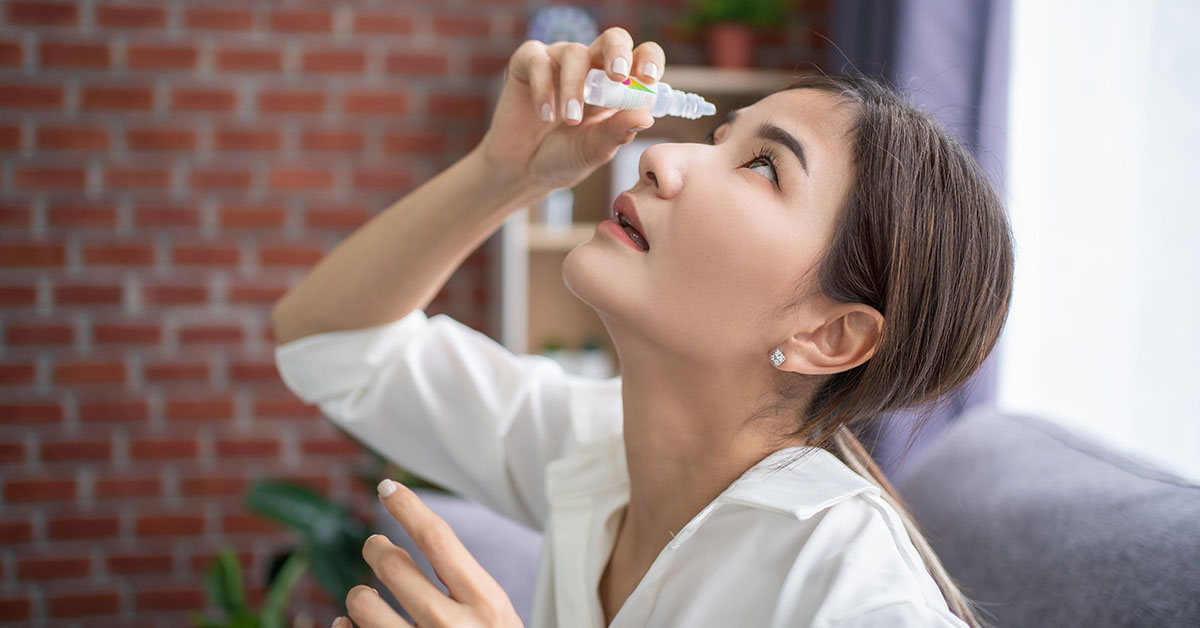What is blepharitis?
It sounds complicated, pero huwag mag-alala! Ang sakit na blepharitis ay hindi kasing lala ng ibang eye disease gaya ng glaucoma.
First of all, to get your worry out of the way, it is a manageable and curable common eye condition. More importantly, it is not contagious and will not lead to any permanent condition as long as it is treated.
It happens mostly due to oily skin where oil glands may get clogged leading to irritation and inflammation of the eye lids. Sa madaling sabi, ito ay ang pamamaga sa may bandang talukap ng mata. Although it usually affects both eyes, it can also just affect one. It may be located on either the outside of your lid(s) or right under.

Two Types of Blepharitis
Depending on this, there are two types of blepharitis.
First, anterior blepharitis affects the extremity (bandang labas ng talukap) which is right where your eyelashes (pilikmata) come out of your lids. This typically occurs when the patient has dandruff on the scalp or eyebrows (kilay) and it lands on the lashes. This may be the cause of infection making the lid darker in color and swollen. Other possible causes, although rarely, are either:
- an allergic reaction due to make up, skin product or pollen; and
- contact with mites through dust or by being close with another person who carries eyelash mites.
Meanwhile, posterior blepharitis occurs under the eyelid (sa ilalaim) when an oil-producing gland called meibomian glands produce thick and unhealthy oil.
Based on these initial descriptions, you can imagine that it can be extremely uncomfortable. As the lids are inflamed, it may feel itchy and burning making your eyes tear and crusty. Maaring makaramdam ng paghapdi at pagkati ng mga mata. Although these are the most common symptoms, a person infected may also experience having:
-
- swollen eyelids
- greasy eyelids
- red, irritated eyes
- excessive blinking
- blurred vision
- loss of eyelashes
- eyelashes that grow towards the eyes (trichiasis)
- sensitivity to light (Photophobia)
Although this is not considered a severe eye disease, it is important to have it treated before it leads to something more severe. There may be underlying conditions causing blepharitis so it is important to know the root cause and solve it first.
What are the possible risks leading to blepharitis?
This eye condition can affect both men and women, children and adults equally. Although it is curable, it may be recurrent depending on the triggers or risks present.
-
- Dry eyes: As it literally describes, it is having dry tear which may alter the eyes’ bacterial resistance, leading to infection
- Meibomian gland dysfunction (MGD): It hinders the oil from the meibomian glands to flow freely or flow too much which may either cause dry eyes or over-secretion of oil that may clog and engorge the glands, causing infection
- Dandruff (seborrheic dermatitis): when this scalp condition causes flaking that falls to the eyelids, it can cause irritation that may then lead to inflammation
- Lice or mites in eyelashes (demodicosis): these tiny bugs are parasites that can block the follicles in the eyelash and glands in the eye, this blockage can cause blepharitis
- Allergies: contact with chemicals or substances that can cause irritation may lead to infection then inflammation
- Acne (acne rosacea): this kind of facial skin inflammation can include the eyelids as well
Other triggers can occur due to too much bacteria. They are naturally occurring in our skin but when there is too much bacteria, it can cause bacterial infections and eye conditions such as blepharitis.
Other factors may cause development of blepharitis such as:
- Having diabetes
- Wearing contact lenses
- Being exposed to irritants like chemicals
- Living or working in dry environments
- Not removing make up thoroughly
- Having oily skin
- Having hormonal changes
- Having poor hygiene
Other health and environmental conditions aside, a person’s personal habits and cleanliness are important aspects that should be considered. Una sa lahat importante ang kalinisan at pagiging malinis sa sarili.
If you are already suffering from this condition, you can manage and treat blepharitis by doing the following.
- Use a warm compress to dampen eye crusts and help wipe away oil debris.
- Use a lid scrub in spray or foam formula. The hypochlorous acid it contains can reduce the bacteria in the eyelid skin.
- Use prescription eye drops which may contain steroids or treatment to help control the redness, swelling, and irritation. MedChoice’s Hynadin is an eye lubricant that can help treat this eye condition. The dosage using this eye drop can be adjusted accordingly based on the severity of the symptoms.

4. Consult your doctor and follow the prescription antibiotic. Aside from eye drops, there are also pills and ointments that may be prescribed. Be sure to get a diagnosis and professional help.
5. Treat other health problems that are the root cause of your blepharitis. This eye condition may recur if the root cause such as dandruff, MGD, or other health problems are not treated first.
Now that you are informed, we can all agree that prevention is still better than cure.
You can avoid blepharitis if you:
- have good and clean hygiene
- wash your hands with soap and water
- remove eye make-up before going to sleep
- eat green, leafy vegetables and omega-3 rich foods to help the glands in your eyes work better
Eye care is also important.
Perhaps, the eyelids are a common area that is rarely cleaned for someone who does not have a regular skin care routine. Still, it is also an important and crucial part of the body. As it frequently comes in contact with the different elements in the environment as much as it comes into contact with our own fingers or hands, eye care is definitely something that should not be skipped. As MedChoice champions its Clear Solution, Clear Vision, let us remember that we can rely on high quality and affordable solutions to take care of our eyes.

Visit MedChoice Pharma for Vision Care!
Know more about products like Hynadin when you visit our website. Trust MedChoice, prioritizing “Better choice. Better lives.”
References:
Cleveland Clinic (2022) Blepharitis https://my.clevelandclinic.org/health/diseases/10032-blepharitis
National Eye Institute (2020, August) Blepharitis https://www.nei.nih.gov/learn-about-eye-health/eye-conditions-and-diseases/blepharitis
American Optometric Association (2023) Blepharitis https://www.aoa.org/healthy-eyes/eye-and-vision-conditions/blepharitis?sso=y
John Hopkins Medicine (2023) Blepharitis https://www.hopkinsmedicine.org/health/conditions-and-diseases/blepharitis
